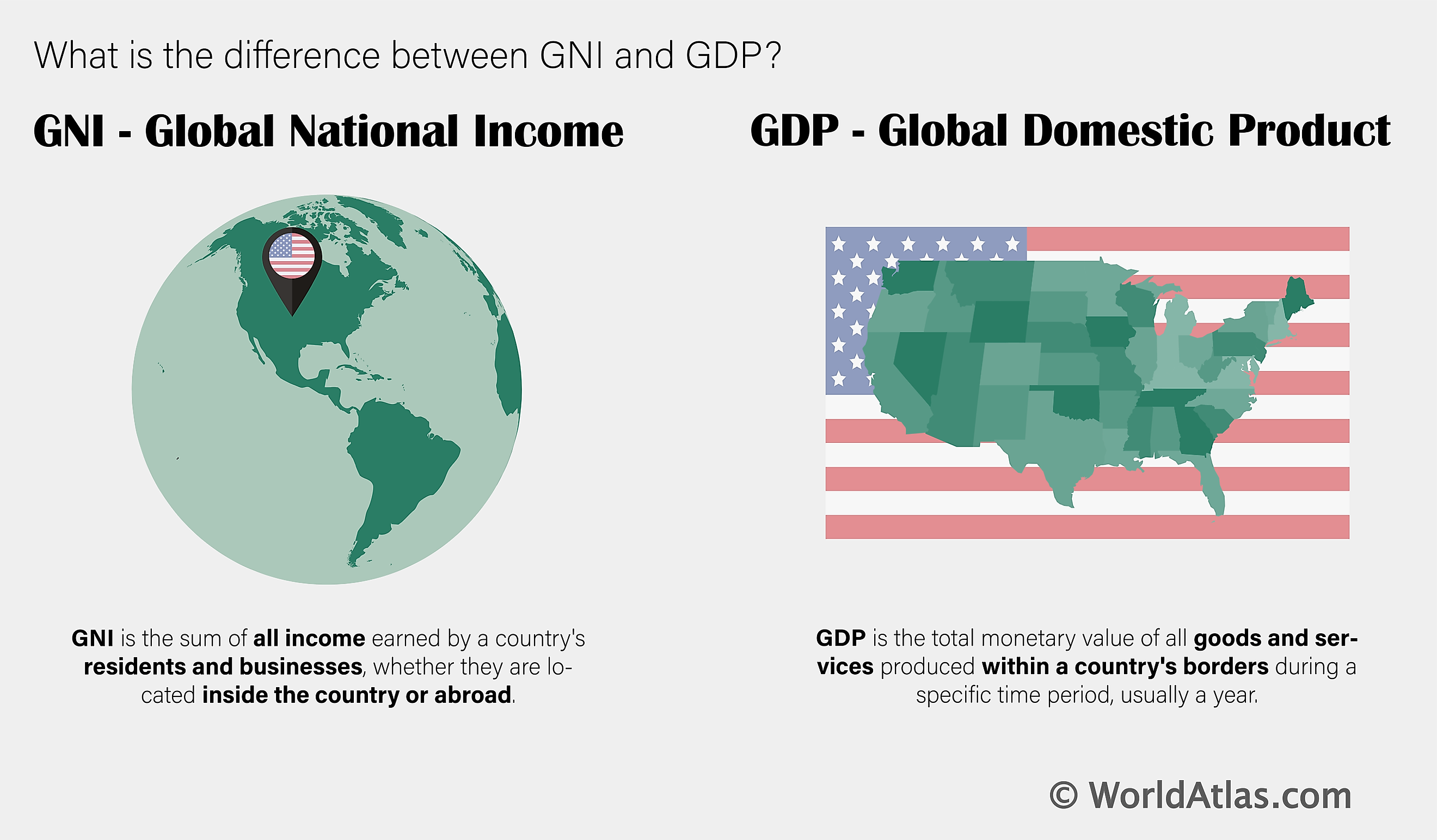
What is the Difference Between GDP and GNI?
When it comes to evaluating a country's economic performance, policymakers, investors, and economists rely on various metrics. GDP and GNI are two of the most frequently used measures of economic activity. While both indicate the size of a country's economy, they differ in their approach and purpose.
Gross Domestic Product (GDP) is a measure of the total value of all goods and services produced within a country during a specific period, usually a year. It is used to measure the economic output of a country and track its economic growth. Gross National Income (GNI) is similar to GDP, but it includes income earned by a country's residents abroad, as well as the income of non-residents within the country. It is considered a more accurate measure of a country's wealth and standard of living and services by domestic residents, which make the GNI a better indicator of people's quality of life.
What Is GDP?

GDP is widely used as an indicator of a country's economic health and growth, as well as its standard of living. The GDP is calculated by adding up consumer spending, investments, government spending, and net exports (exports minus imports). Higher GDP typically indicates a stronger economy while lower GDP may indicate economic difficulties.
The top three countries in terms of GDP are the United States ($26,190 billion), China ($19,240 billion), and Japan ($4,370 billion). The high GDPs of the USA, Japan, and China can be attributed to factors such as large populations, advanced technology, strong manufacturing and service sectors, significant infrastructure investment, favorable economic policies, and geopolitical advantages like geographic location and political stability. These factors have enabled these countries to build strong and resilient economies.
The three countries with the lowest GDP are Tuvalu ($70 million), Nauru ($140 million), and Central African Republic ($220 million), and this is due to many reasons, inluding their small population, limited natural resources, weak infrastructure, political instability, and reliance on foreign aid.
What is GNI?

Gross National Income (GNI) is a measure of a country's total income, including both domestic and foreign sources. It is calculated as the sum of all income earned by a country's residents and businesses, whether they are located inside the country or abroad.
The top three countries in terms of GNI are Bermuda ($122,470), Switzerland ($90,600), and Luxembourg ($88,190); these countries have high GNIs because of their well-established financial services industries, stable political systems, skilled workforce that attracts high-paying jobs, as well as favorable economic policies.
On the other hand, the three countries with the lowest GNI are Burundi ($220), Afghanistan ($390), and Somalia ($430). These low numbers are heavily accounted for by a long history of terrorism and conflict, low levels of education, and dependence on foreign aid, which undermines domestic industries, creating a cycle of dependence.
In conclusion, while GDP is a commonly used indicator of a country's economic performance, it has limitations and may not fully reflect the well-being of its citizens. GNI provides a more comprehensive view by including income from abroad. The top performing countries in terms of GDP and GNI have strong economies, large populations, and thriving financial sectors. On the other hand, the countries with the lowest GDP and GNI face challenges such as small populations, lack of resources, and political instability. It is important to consider both GDP and GNI when evaluating a country's overall economic performance and standard of living.











